Cu Chi Tunnels in Ho Chi Minh City
These tunnels in Vietnam were excavated by Communist-aligned Viet Cong troops that were worse-supplied than the USA and Southern troops. The Viet Cong had to resort to crude and unusual methods of warfare, like digging deep and complex tunnels that extend for thousands of miles. These tunnels lie beneath Saigon’s northwest regions, which are collectively called Cu Chi.
For historic reasons, many war mementos were left here on purpose, and you can see numerous burnt and rusted military vehicles and tanks on the ground a small distance away from the tunnel entrance. Bomb craters are also left for the same purpose. Overall, the place is a perfect reminder that war occurred here, so it draws many tourists here to see it.
History of Cu Chi Tunnels
The Communist forces, being outgunned and forced to retreat, began digging the tunnels at the end of the 1940s. Then they were fighting a war against the French. The tunnels were excavated by hand labor and were only dug a short distance every time.
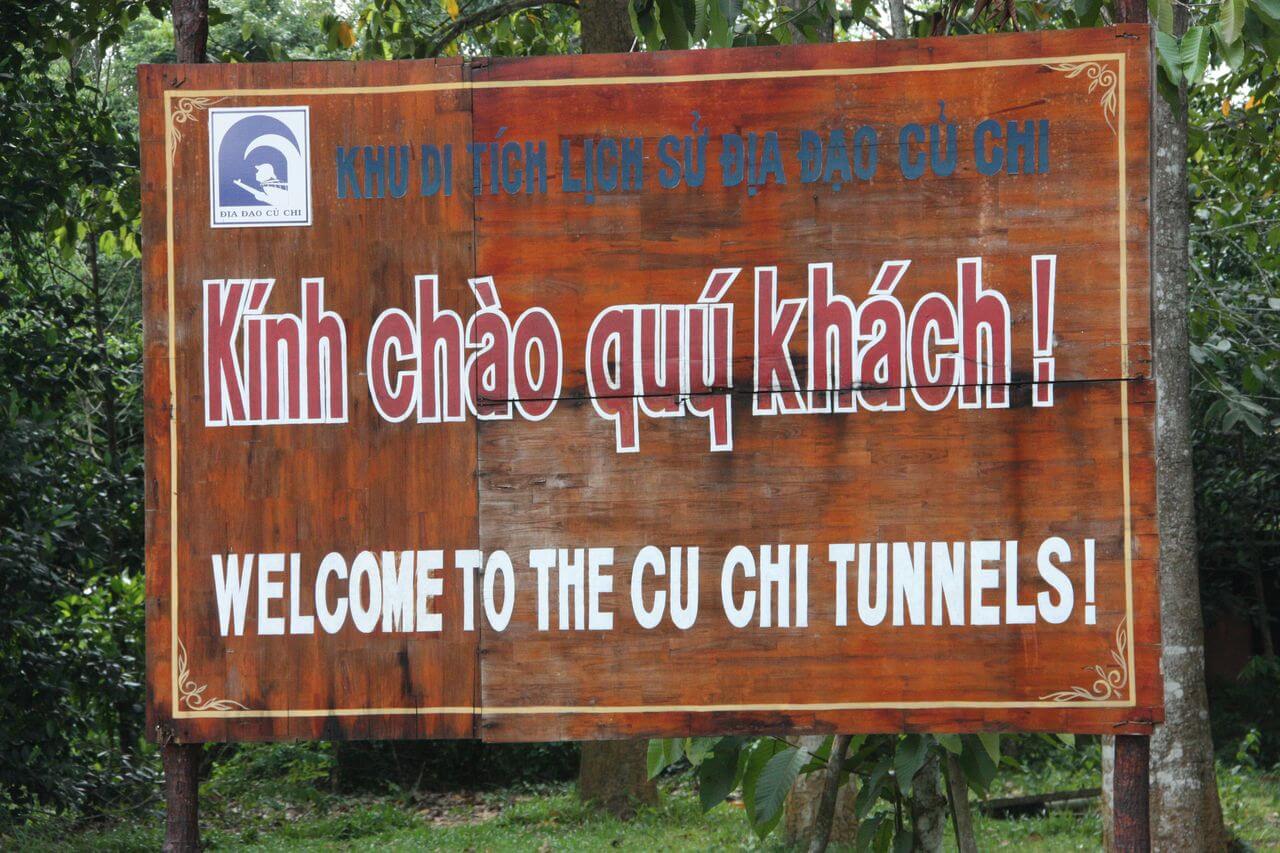
The war against the French continued, and meanwhile, the United States brought their army closer. The tunnel-building continued in the 1960s, and the North Vietnamese troops kept expanding the tunnels.
The tunnels allowed the Viet Cong to do many things to damage the armies of the South Vietnamese and the USA. The tunnels were most commonly used to transport supplies and ammo from the support bases, located 250 kilometers from the front. The tunnels actually traveled all the way from Cambodia to Saigon.
The United States relied heavily on air raids, so the Viet Cong resorted to the tunnels as a method to escape being bombed. The tunnels also became a vantage point from which these people could ambush enemies. As the war went on, the tunnels became home to entire villages. People had to spend much of their life there, and after a while, there were even factories and hospitals built below the ground.
In return, the US started deploying specially trained “tunnel rats” – soldiers, whose mission was to travel through the tunnels and look for possible ambushes or enemy troops.
The tunnels were repeatedly used by the Viet Cong throughout the entire war. They are what helped the Vietnamese win the war.
After the war ended, many of the tunnels collapsed, but the government preserved a large portion of them for the purpose of a war memorial.
Today, the tunnels are a very famous and well-known tourist attraction. They are lit with low lights that help people see inside them, while also keeping it dark enough to be creepy.
Which Tunnels Can You Visit?
There are two places you can enter the tunnels – Ben Dinh and Ben Duoc. The best place is Ben Duoc because these tunnels are most like the real thing and are most probably original tunnels. Ben Dinh is also a good place to see the tunnels, but they are not original – all of them have been re-dug and widened to accept more tourists.
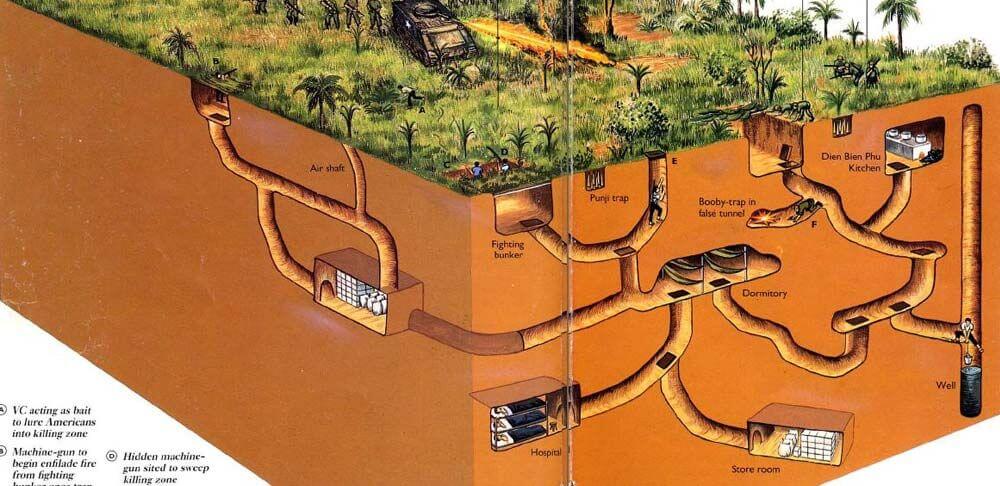
If you are looking for the original experience, then visit Ben Duoc. There, you will be able to see the real authentic tunnels that the Viet Cong used.
What to Do in Cu Chi Tunnels?
First of all, you have to remember that the tunnels are not all the same. There are actually two tunnel systems, and Ben Dinh is more oriented towards tourists. This tunnel system is much wider, so many people can walk alongside. The tunnel is, therefore, considered fake by some visitors, who go to Ben Duoc for a more realistic and historical view of the tunnels.
Duoc has much more narrow and dimly lit tunnels, which will be scarier to travel in.
There are many attractions inside the tunnels, and the tunnel systems have already become a trap for tourists, frequently visited by people from all around the world. The first attraction you encounter is the tunnels themselves. After you approach the entrance, you will be allowed to explore as you like.
Ben Duoc Memorial Temple is located near the tunnel’s entrance and is also worth a view. It is a small rural-style temple that was built to honor the people killed on both sides of the conflict. This temple relates to both the Vietnam war and the war against the French.
Inside the Tunnels
You are warned to bring clothes that you don’t mind getting dirty because the tunnels are sometimes narrow, and you will rub on the ground many times.
Another thing to remember is to take bug spray because there will be many mosquitoes there.
There are also sometimes bats residing inside the tunnel, so be warned and look ahead when traveling inside the tunnels.
The tunnels are very bendy, and in many places, you cannot see far in front of you. People who suffer from claustrophobia can become afraid, so be prepared to be afraid and worried. The atmosphere is very humid and hot, especially on warm days, so people with a weak heart or overall health are advised not to go inside the tunnels.
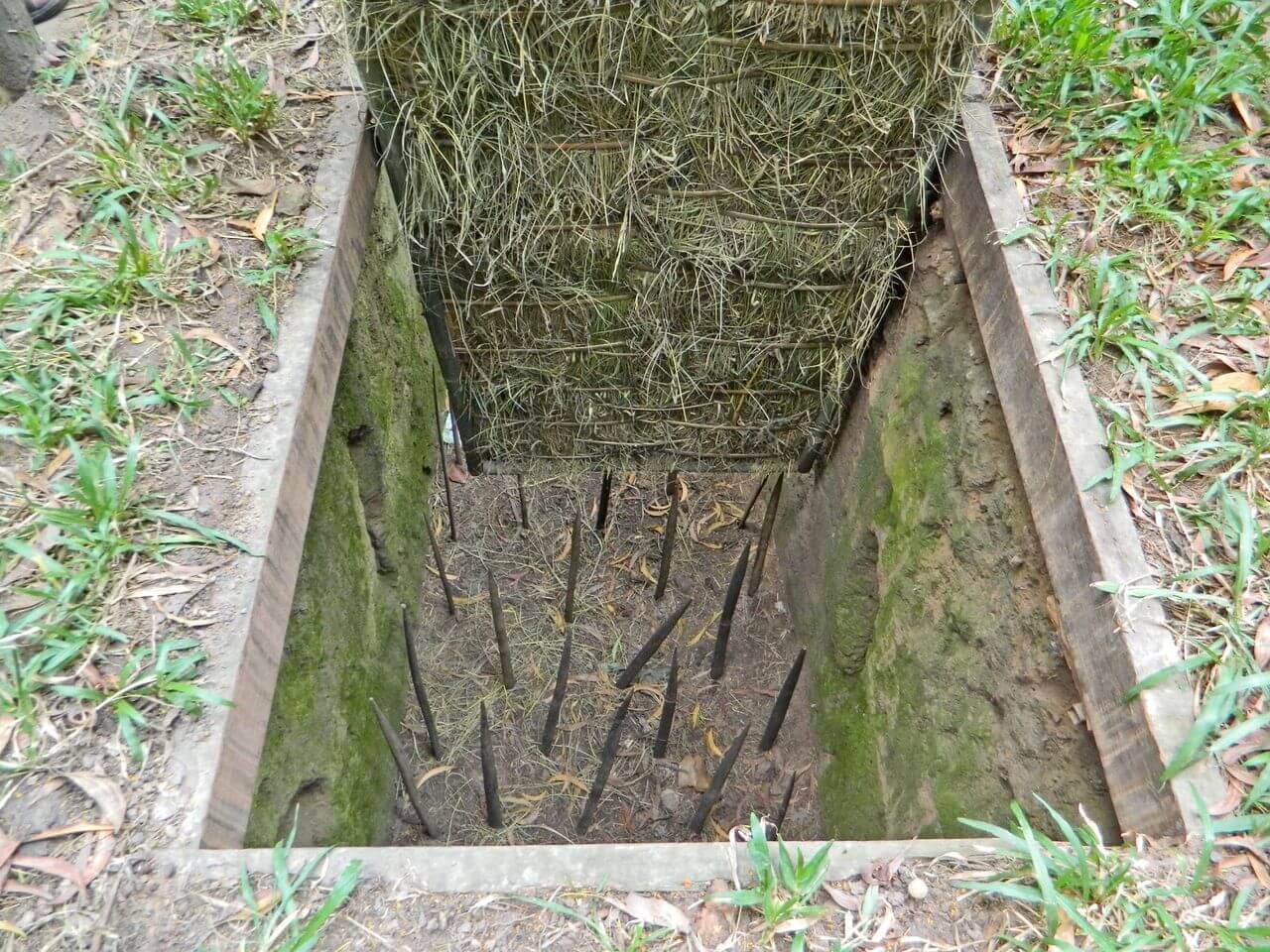
Expositions
The tunnel has a public entrance on one side, where people will be shown a video exposition of how the war went and how people had to live on both sides. Then, if you are on a guided trip, you have to follow the guide from here on. Otherwise, you are allowed to explore on your own.
The next attraction has an interesting activity involved. There is a real shooting range there, where you are allowed to shoot with real guns, provided you are of the right age. You have to be over 16 and of sound health to be allowed to shoot. For a price of 1-2 dollars per shot, you will be allowed to shoot an AK47, Garand, and other guns. The guns are real; hence, they make a lot of noise and recoil.
The gun room is located in the more tourist-oriented Ben Dinh system.
For a more complete view of the war, you may also travel to the nearby War Remnants Museum, where you will be able to see many more historical expositions related to the Vietnam War.
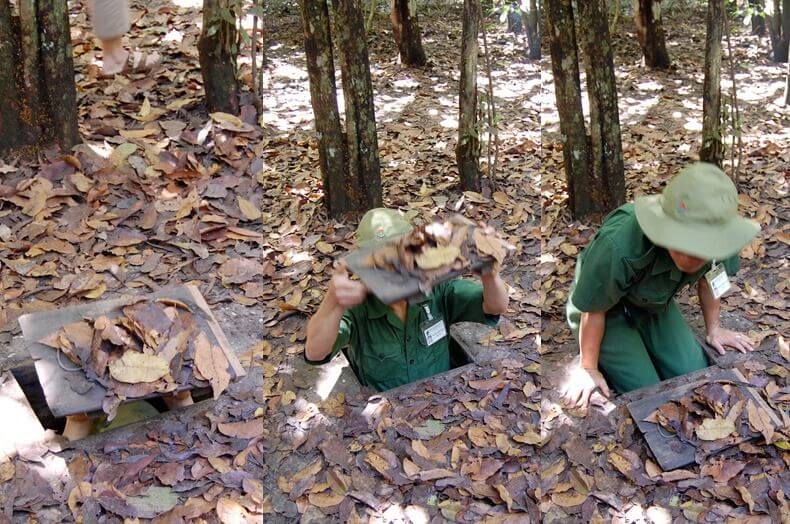
The exposition will also show a lot of interesting things related to the war, and in the Ben Dinh tunnel system, you will be shown many of the lethal booby traps that the Vietnamese used to kill enemy soldiers. Among them, you will be shown the grenade-wire trap, the punji sticks, and many other traps. Also, you will see examples of rooms built underground by the Viet Cong. There will be a kitchen too, where you will be served some of the traditional dishes.
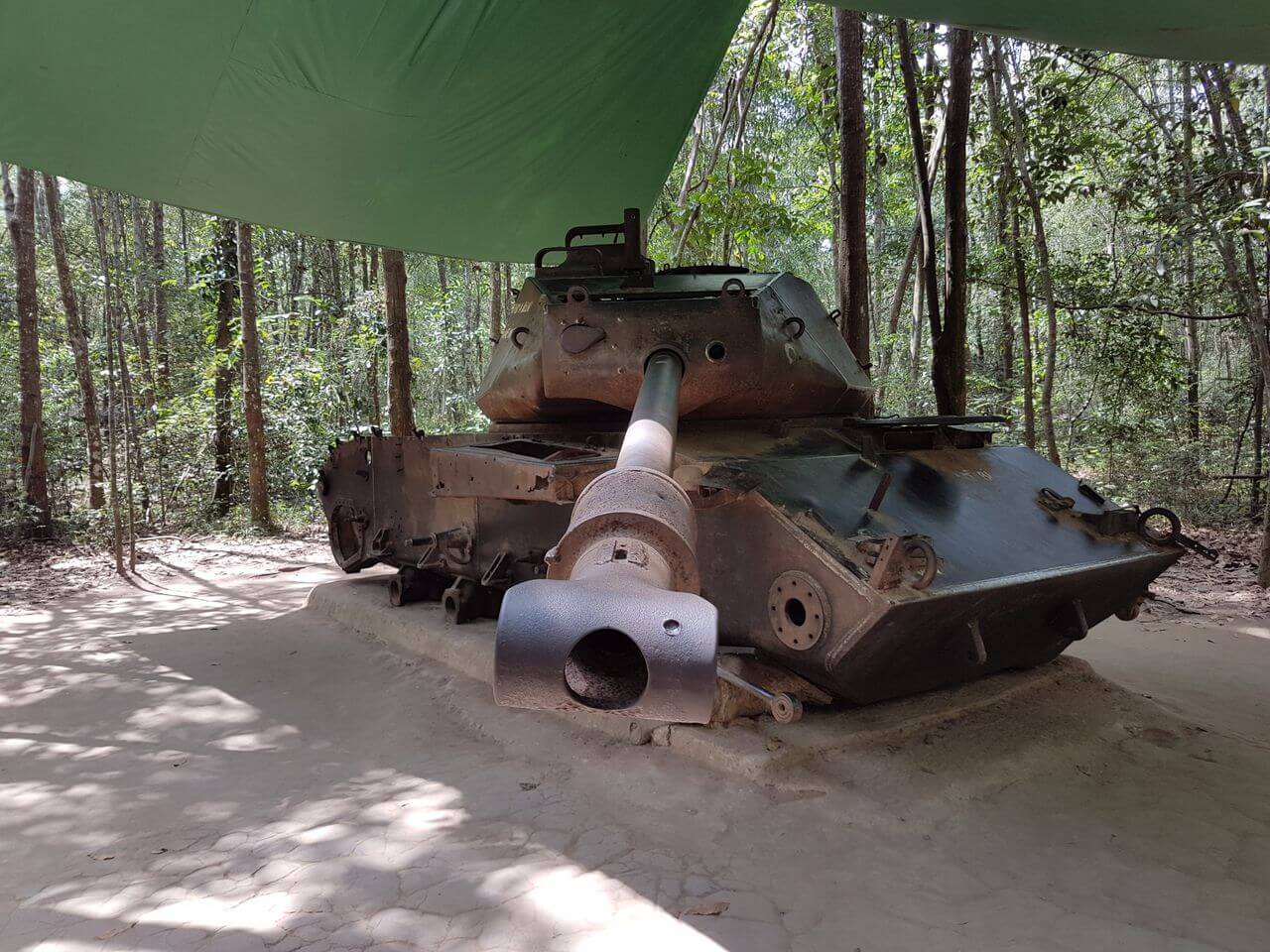
What to Eat and Drink in Cu Chi
The best place to eat and drink is Ben Nay Restaurant, which is located near the Cu Chi Tunnels, and the food there is very tasty, as many reviewers have already reported. Customers give it 4 stars out of 5.
One of the tastiest local dishes is Cu Chi Beef, which is a soft and juicy variety of veal. It is served with a special anchovy sauce.
A great drink that is only served there is Nuoc Mia Sau Rieng – this is sugarcane and durian juice. If you enjoy durian, then you will like this drink, it’s also great for staying hydrated.
There is also food served inside the tunnel, most of it Boiled Tapioca with Ground Peanuts, Sugar, and Coconut. This is what the soldiers of the Viet Cong had to eat during the war, but nonetheless, the dish is pretty tasty and filling.
Opening/Closing Time and Entrance Ticket Prices
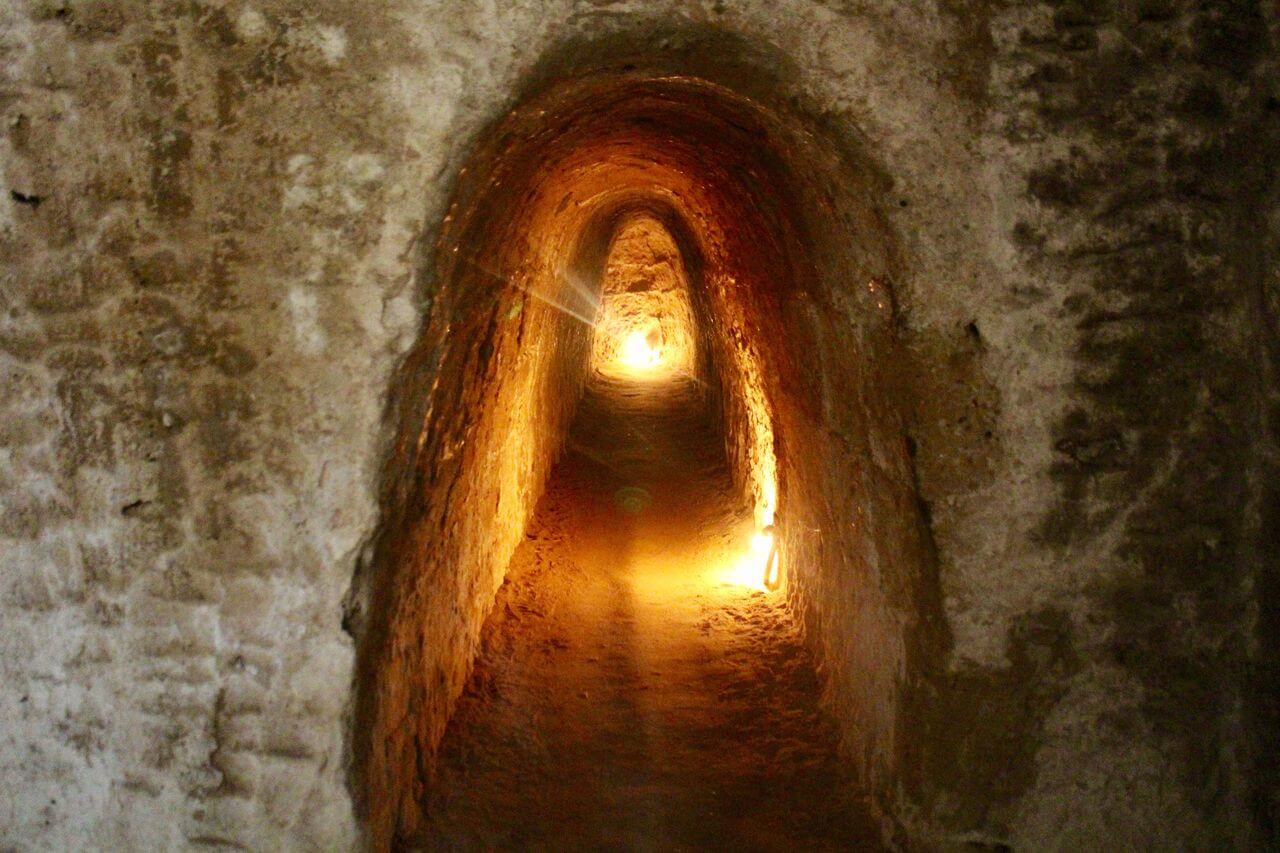
The tunnels are open for visitors every day, and you will be allowed to enter from 7 in the morning any day of the week. The attraction will be closed at 6 in the afternoon on weekdays, but on weekends, it will close by 5.
Admission tickets cost 15 dollars for each visitor. This ticket allows you to wander around the tunnels wherever you want. A less expensive ticket costs 5 dollars or a little more, and it allows you to go on a guided tour of the tunnel.
How to get there?
Cu Chi Tunnels by Boat
This is a very common way to get to the tunnels, and a number of local companies offer boat service and will bring you there for a small fee. Saigon Boat Company and Saigon River Tour both offer water travel there. There are many interesting sights to see while traveling in the boat, so it is a recommended method of getting to the site.
Cu Chi Tunnels on Your Own – by Public Bus
A public bus is not a bad way either. You will definitely not overpay for transportation, and it is really safe. But it does ruin the impression, and it makes the special mood disappear because you are traveling in a bus, and the tunnels are supposed to feel lonely and claustrophobic.
Cu Chi Tunnels by Taxi
This is probably the least efficient way to get to the tunnel area. It is 50 kilometers from the city, and it will cost at least 60 dollars to go there by taxi. You can use any taxi company but preferably use well-known brands. However, as already stated, it is better to try a different way.

Cu Chi Tunnels by Motorbike or Car
A motorbike is a best and recommended way to get there because you get to experience everything by yourself. Traveling in a rented car is also a good way to get there because you are alone, but a motorbike is even better.
Both cars and motorcycles can be rented in the nearby city. One trip is a company that provides the best experience and is ready to offer both bikes and cars for rent. This company is considered the best, and you are heavily advised to choose them.



